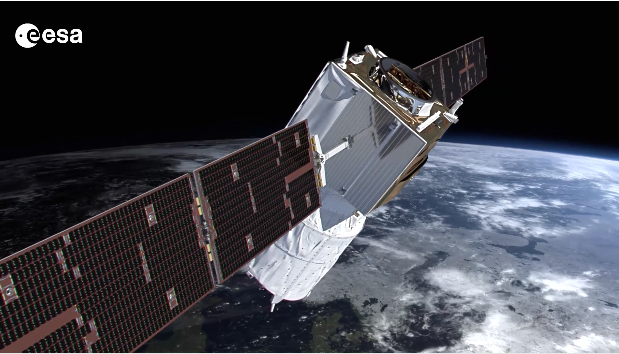
This satellite is the first of its kind, and will be the first satellite capable of performing global wind-component-profile observation on a daily basis in near real-time. The 1.4-tonne spacecraft, primed by Airbus, features the LIDAR (Light Detection And Ranging) instrument called Aladin, which uses the Doppler effect to determine the wind speed at varying altitudes.

European Space Agency’s wind sensing spacecraft, Aeolus, wind sensing satellite, has left Liège in Belgium having successfully completed an extensive thermal and functional performance test campaign under in-orbit conditions. It will now undergo final checks at InteSpace test center in Toulouse, France, before being shipped to French Guiana in the summer ready for launch on a Vega launcher.
How the process works is as follows: Aladin fires a powerful ultraviolet laser pulse down through the atmosphere and collects backscattered light, using a large 1.5m diameter telescope, which is then analyzed on-board by highly sensitive receivers to determine the Doppler shift of the signal from layers at different heights in the atmosphere.
The data from Aeolus will provide reliable wind-profile data on a global scale and is needed by meteorologists to further improve the accuracy of weather forecasts and by climatologists to better understand the global dynamics of Earth’s atmosphere.
Aeolus will orbit the Earth 15 times a day with data delivery to users within 120 minutes of the oldest measurement in each orbit. The orbit repeat cycle is 7 days (every 111 orbits) and the spacecraft will fly in a 320 km orbit and have a lifetime of three years.

